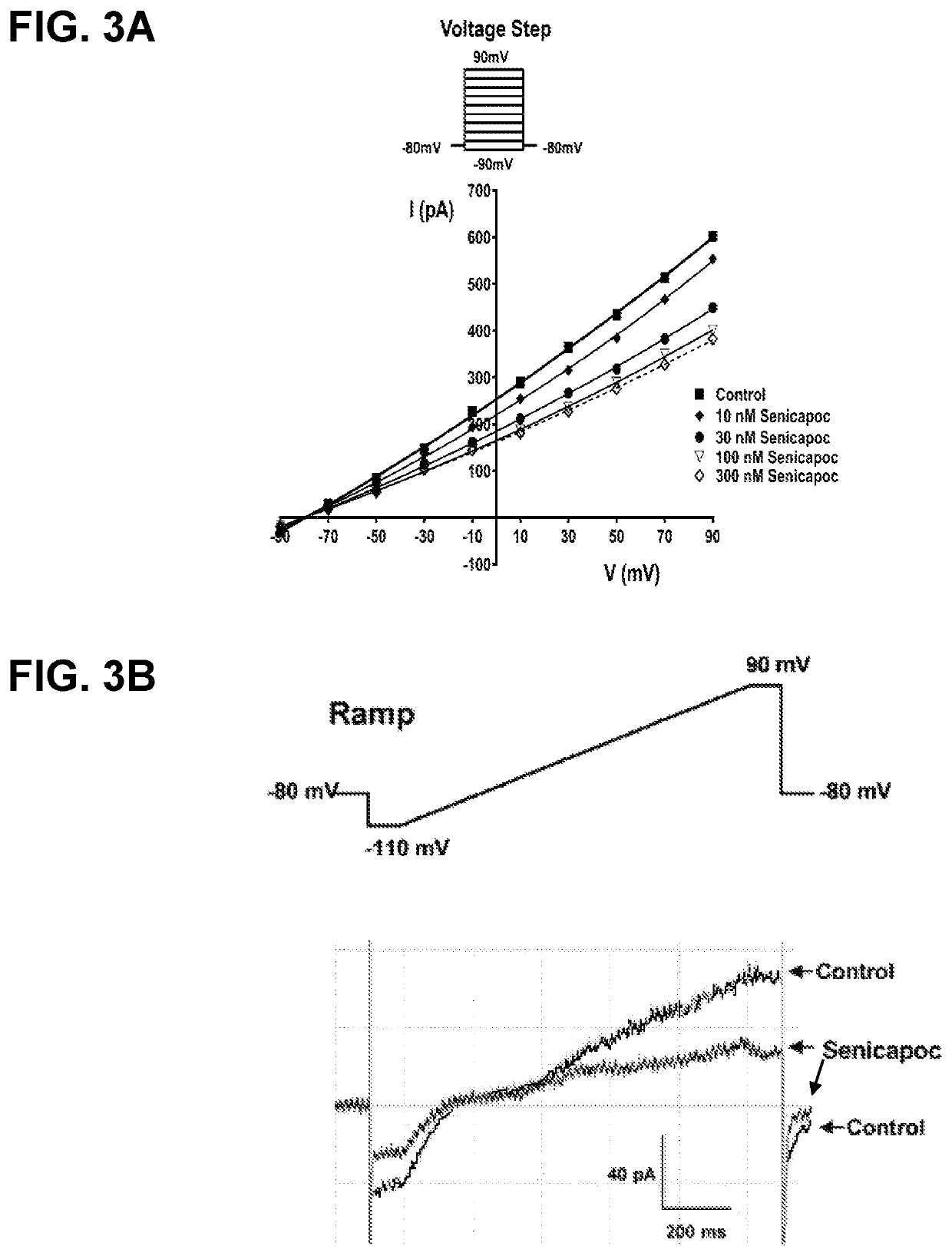Use of senicapoc for treatment of stroke
a stroke and senicapoc technology, applied in the field of stroke treatment with senicapoc, can solve the problems of limited efficacy, hampered by safety concerns, lacked potency and selectivity of early inhibitors, etc., and achieve the effect of reducing neuroinflammation, preventing or reducing stroke or ischemia-induced injury
- Summary
- Abstract
- Description
- Claims
- Application Information
AI Technical Summary
Benefits of technology
Problems solved by technology
Method used
Image
Examples
Embodiment Construction
[0022]Stroke is the leading cause of serious long-term disability and the fifth leading cause of death in the United States. Treatment options for stroke are limited and have limited efficacy. Neuroinflammation mediated by microglia and infiltrating peripheral immune cells is a major component of stroke pathophysiology. Interfering with the inflammation cascade after stroke holds the promise to modulate stroke outcome. The calcium activated potassium channel KCa3.1 is expressed selectively in the injured CNS by microglia. KCa3.1 function has been implicated in pro-inflammatory activation of microglia and there is recent literature suggesting that this channel is important in the pathophysiology of ischemia / reperfusion (stroke) related brain injury. Accordingly, senicapoc, a KCa3.1 inhibitor, may intervene in the inflammation cascade that follows ischemia / reperfusion and limit the damage caused by stroke or other ischemic injury.
[0023]Senicapoc attenuates pro-inflammatory responses i...
PUM
| Property | Measurement | Unit |
|---|---|---|
| concentration | aaaaa | aaaaa |
| concentrations | aaaaa | aaaaa |
| time | aaaaa | aaaaa |
Abstract
Description
Claims
Application Information
 Login to View More
Login to View More - R&D
- Intellectual Property
- Life Sciences
- Materials
- Tech Scout
- Unparalleled Data Quality
- Higher Quality Content
- 60% Fewer Hallucinations
Browse by: Latest US Patents, China's latest patents, Technical Efficacy Thesaurus, Application Domain, Technology Topic, Popular Technical Reports.
© 2025 PatSnap. All rights reserved.Legal|Privacy policy|Modern Slavery Act Transparency Statement|Sitemap|About US| Contact US: help@patsnap.com



